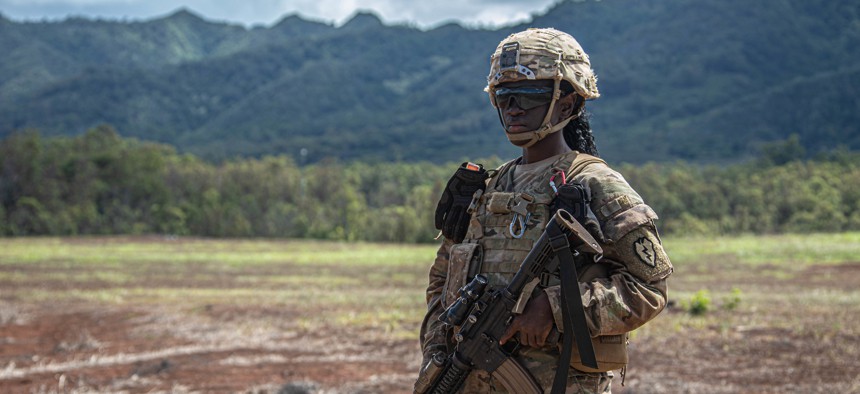ELIZABETH HOWE

The U.S. Army’s first new regional training complex in a half century is intended to better replicate the Pacific region’s potential battlefields and to reduce the time needed to send troops and gear for training in the continental United States.
The Joint Pacific Multinational Readiness Center will have two physical campuses, in Hawaii and Alaska, and a third mobile campus to be an “exportable capability that can deploy throughout the Indo-Pacific.” The exportable campus has already operated in Indonesia and is heading to Australia next.
“This allows us to keep trained and ready forces available and forward in the region,” U.S. Army Pacific Commanding General Charles Flynn told reporters Thursday. “It allows us to generate readiness in environments and in conditions that we're most likely to operate in.”
The Alaska campus replicates the Himalayan mountains where U.S. troops might expect to operate, while the Hawaiian archipelago resembles the “austere jungles” of southeast Asia, Flynn said.
“The Joint Readiness Training Center in Louisiana does not look like Southeast Asia, but these eight Hawaiian Islands certainly do,” he said.
As well, Flynn said, training in theater will save months every year spent sending troops and gear to Fort Polk, Louisiana, and other locations.
“We were taking brigades, tactical units out of Alaska, and tactical units out of Hawaii, and we were sending them back through the Panama Canal to Texas to go to Louisiana to train,” Flynn said.
Now, troops can conduct that training in Hawaii, Alaska, or wherever the mobile campus is.
On Monday, a ten-day rotation will kick off across four islands in Hawaii. More than 6,000 troops will exercise “in the box” while an even larger force provides support. Units from Thailand, Indonesia, and the Philippines will also participate.
“This is intended to be the most immersive training environment we can create, the most realistic training environment,” said Brig. Gen. Jeffrey A. VanAntwerp, 25th Infantry Division’s deputy commanding general for operations.
The Army declined to identify which units are taking part in the exercises, or to say exactly what scenarios are being rehearsed. But China is clearly the most important potential adversary. The People’s Republic of China and its “coercive and increasingly aggressive endeavor to refashion the Indo-Pacific region in the international system to suit its interest and authoritarian preferences” are “the most comprehensive and serious challenge to U.S. national security,” a senior defense official said during a briefing on the NDS Thursday.
Flynn said, “These are scenarios that are left without designated names. But we look at all the threats that we have in the region here, and we create a scenario that challenges our leaders, soldiers, commanders, and organizations to operate against any adversary and any threat that might emerge here”
But he added that Alaska and Hawaii are “exactly the type of conditions and environment that we need to be able to train in and operate in.”
“If called upon to fight in that region we are prepared…These campuses, if you will, in Hawaii and Alaska, are exactly the kind of conditions we need to put our formations in,” Flynn said.
No comments:
Post a Comment